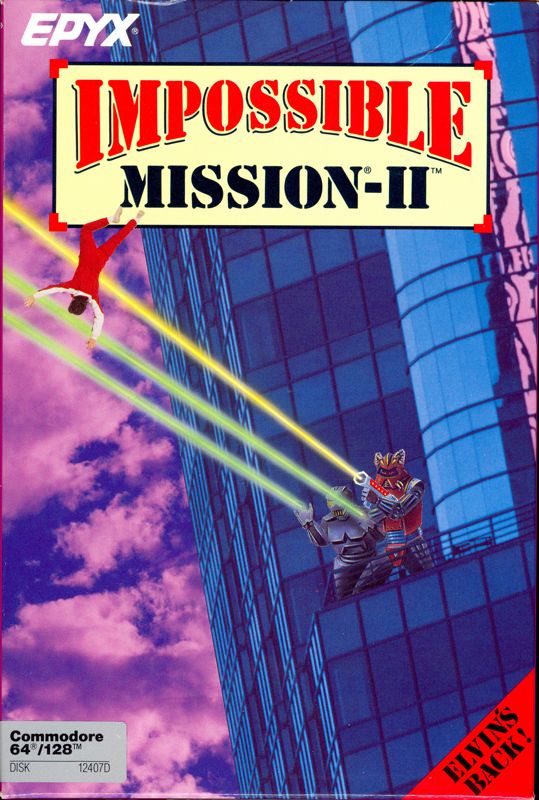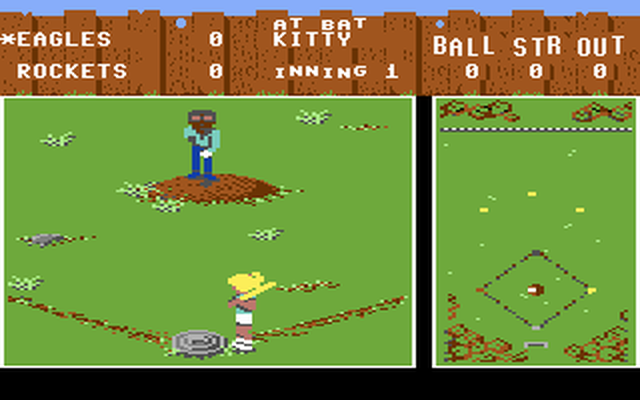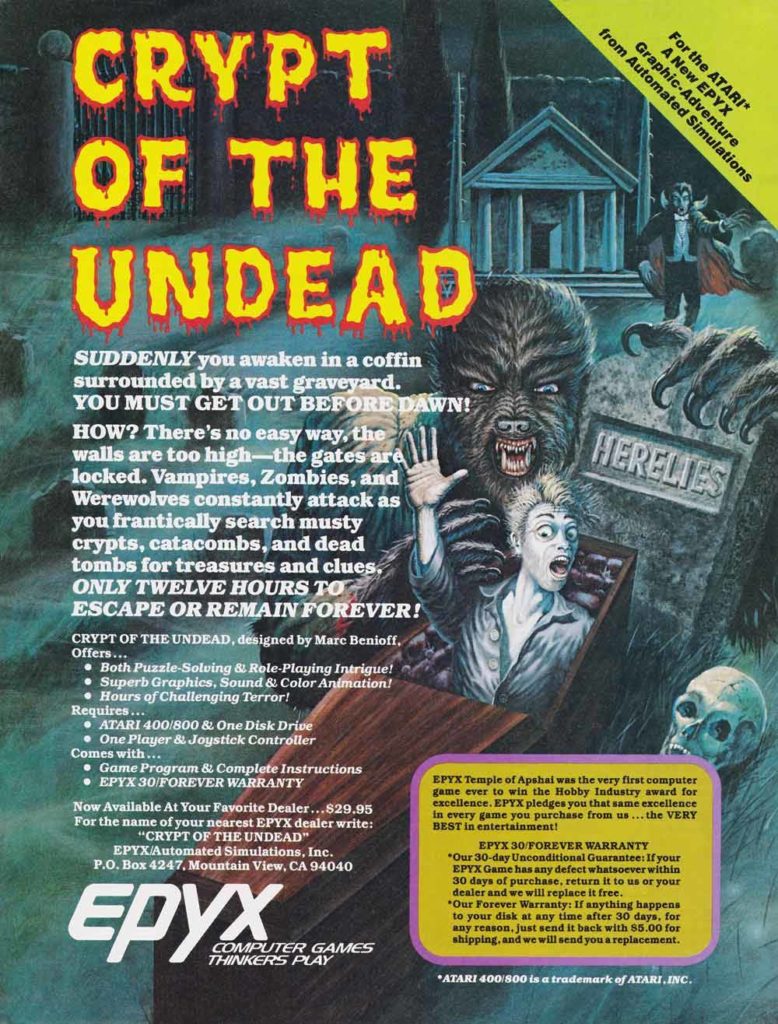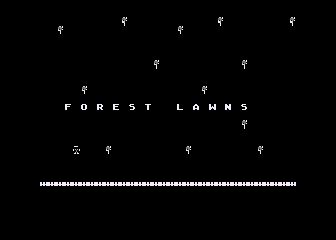Source: Commodore Magazine – Volume 9, Number 5 – May 1988
Impossible Mission is one of many absolute classics released on the Commodore 64 and there is no doubt it is one of the best. However, the sequel often seems to be overlooked. I guess in some sense this makes sense as it isn’t all that much different than the original. On the other hand, what is wrong with more of the same when it was so good to begin with? However, it would be unfair to say it is JUST more of the same. There are some differences. Some are good while others may be more a matter of opinion.

For those unfamiliar with the series, it is essentially a platform game where you, as a secret agent, make your way from room to room (screen to screen) trying to find pieces of a puzzle that will allow you to prevent a global catastrophe. This catastrophe will be brought on by the evil Professor Elvin Atombender is is the antagonist of these games. It isn’t quite as simple as wandering around finding puzzle pieces though. You have to avoid traps, robots, and other obstacles. Simply navigating from one part of the room to another can be difficult with many opportunities to plunge to your death.
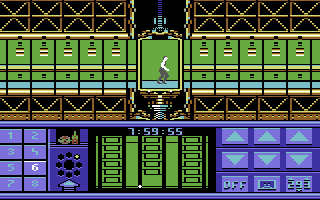
A couple of things that I always though was neat about these games was the ability to manipulate the robots and other things via computer terminals in the game and the process of searching. By accessing a computer terminal, you could temporarily disable the robots or reset elevators for example. The search process wasn’t terribly interesting. Basically whenever there was a piece of furniture or some other object that you wanted to search, there would be a time bar that would have to fill up (or was it deplete?) in order to complete the search. However, this added greatly to the sense of suspense as the robots could reactivate (or reach you) at any moment.

The sequel came four years later after the original which is a pretty long time. The original was released in 1984 while Impossible Mission II was released in 1988. Arguably, it was the same game except improved in almost every way. The graphics were improved with more variety and more distinct differences for different areas. Speaking of distinct areas, instead of just being one large underground complex like the original, Impossible Mission II is divided into multiple towers with more distinct level variations and more complex environments. Also added to the sequel were various gadgets that you could use such as bombs to destroy robots, EMPs to disable electronic devices, and more. Also introduced with Impossible Mission II were more enemy types and obstacles which definitely increases the challenge level.
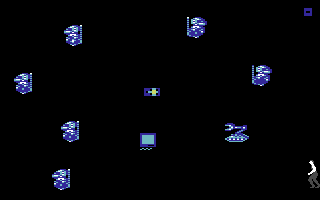
And finally, speaking of challenge level, the puzzles are more varied and complex. On one hand, new challenges are good. On the other, the puzzles can be difficult and frustrating. The puzzles and the time limit are things I did not really like about either game. While I love the sense of exploration and discovery, the puzzles always seemed kind of dumb. Why am I trying to create music to save the world? I would rather have more time and more rooms to explore to find objects needed to stop Doctor Evil… I mean Professor Elvin Atombender. Don’t make me play the piano.
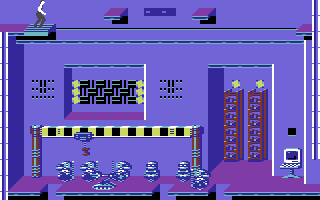
While my preferred platform is the Commodore 64 (and that is where these screen shots are from), Impossible Mission II was available on other platforms as well, including the ZX Spectrum, Amstrad CPC, Enterprise 128, Nintendo Entertainment System, DOS, Atari ST, Apple II, Apple IIgs, and Amiga. As far as the Commodore 64 version is concerned, it was included along with the original on both the C64 DTV and the C64 Mini. You can either track down one of those devices, find an original copy for your Commodore 64, or resort to emulation to give this game a try. There is also a sequel for the Amiga released in 1994 called Impossible Mission 2025.
Despite my complaints though, there is no doubt that Impossible Mission II is one of the best games on the Commodore 64. If you have played the original but never tried the sequel, then you are missing out. If you’ve never played either, what are you waiting for?
